From March 1 – April 3, 2019 I had the honor to visit our Vincentian sisters and brothers in Spain, Belgium, Slovenia, Ukraine, and Bulgaria. The following articles briefly share some of the lessons learned through these visits, in three parts:
- Visits with Superiors General of the Vincentian Family
- Visits with National and Regional Councils of the Vincentian Family
- Other meetings during these days
Visits with Superiors General
The primary purpose of this trip was to continue our remote preparation for the January 2020 meeting of the international leaders of the Vincentian Family in Rome, entitled: FamVin 2020: the Vincentian Family Moving Forward.
In Spain, accompanied by Javier Chento, the coordinator of the VF Communications Commission we met with:
- Sister Mercé Arimany i Pujol, HSC, the Superior General of the Hospital Sisters of the Holy Cross. Their congregation was founded in 1792 in Barcelona by Teresa Cortés as a pious association to serve in hospital ministry. Today approximately 100 sisters work in four countries: Spain, Colombia, Chile, and Ecuador. They specialize in the care of the elderly.
- Sr. Laura Garione, SFU (Superior General) and Sr. Victoria (Councillor) of the Sisters of the Holy Family of Urgell. 220 sisters work in 11 countries in health and elder care as well as education. Their foundress is Blessed Anna Maria Janer.
- Sr. Barbara Ginard Pascual and the General Council of the Sisters of Charity of St. Vincent de Paul of Majorca. Their sisters serve in parishes, schools, and other ministries in Spain, Peru, and Honduras. Their sisters serving in Burundi are in the process of forming a new Congregation: the Sisters of Charity of St. Vincent de Paul of Burundi. One of their members, Francinaina Cirer, was beatified in 1989.
- Sr. Josefina (Vicar General) and Sr. Soledad (Superior) of the Missionaries of Mary Immaculate, Servants of Workers. Our discussion showed us once again the work of Providence. Though having no contact with the Vincentian Family in Spain they are very much connected with the Family in Honduras where they also minister.
In Slovenia, accompanied by Roc Zlender, CM, seminarian of the CM Province of Slovenia we met with:
- Sr. Miroslava Bradica, MVZ, Superior General of the Sisters of Charity of St. Vincent de Paul of Zagreb and Sr. Irma Makse, MS, Superior General of the Sisters of Mary of the Miraculous Medal. We had a fruitful meeting which touched on many subjects of importance to the Vincentian Family in this region.
In the Ukraine and Bulgaria, accompanied by Mykhalo Talapkanych, CM of the CM Province of Sts. Cyril and Methodius we met the two Eastern Rite congregations which belong to our Vincentian Family:
- Sr. Valentyna Ryabushko, SMSV and the Sisters of St. Vincent de Paul in Lviv, Ukraine. The sisters work in a variety of ministries with a special focus on health care and education.
- Sr. Massimiliana Proykova (Superior General) and Sr. Stefania (Vicar General) and their Sisters of the Holy Eucharist. They were founded by Fr. Joseph Alloatti, CM and his sister, Sr. Maria Cristina de Jesus on 29 April 1889. 30 sisters blend their Eucharistic spirituality with their service of the poor in Bulgaria and Macedonia. Their ministries involve them in parish work and lay formation, health care, education, and work with women in need.
It is always a special blessing to meet with the leaders of the Branches of the Vincentian Family. Their love of the Charism, zeal for the Mission, and desire to play a vital role in the growth of the Vincentian Family are always a cause for inspiration and joy.
Specifically, some of the lessons learned and opportunities we face include:
- Many roads lead to the incarnation of the Charism. Every congregation has walked a different road that is yet distinctively marked by the desire to serve those living in poverty in the spirit of St. Vincent de Paul. This reality opens our eyes to an important fact about our Vincentian Movement: we are quite diverse and must recognize and celebrate this diversity in the lived experience of the Family in every country in which we work. Affirming that 150 distinct Branches belong to our Family necessarily means that we widen our vision as to who are our “internal” partners in our service of our Lords and Masters.
- All Congregations in Europe are challenged by the need for vocations. The VF Task Force on the Creation of a Culture of Vocations and the strategies which will be announced in January will hopefully be of assistance to their efforts to strengthen the Charism.
- The two congregations in the Ukraine and Bulgaria comprise the Eastern Rite membership in our Family. They bring a unique perspective to the lived experience of the Charism which broadens our understanding in both liturgy and praxis. Though they are in different countries, we hope that they will also forge a vital partnership in that region of the world.
- The call for ongoing formation in the charism and better utilization of the channels of communication among us remain a pressing need in the Family.
Visits with National and Regional Councils of the Vincentian Family
During my visit in Spain, I had the opportunity to greet five regional groups of the Vincentian Family: Sevilla, Cantabria, Vizcaya, Guipúzcoa y Álava.
These sessions often included a presentation on the international Vincentian Family, a sharing on who comprises the local Family and their ministries, and often a closing Mass. Some observations on these visits:
- There is great energy around the Charism and an expressed desire to see its continued development.
- There is a need for the recruitment of new members to continue the Mission.
- The dissolution of the JMV in Spain will have a lasting impact on the future growth of the Vincentian Family in the country.
- There is a great need for communication within and among the regions, as well as with the National Council.
My three weeks in Spain ended in a meeting with the VF National Council. It was an opportunity to share with them some of the realities of the international Vincentian Family, as well as to encourage them in the process of developing an infrastructure for the Family in Spain. Rather than focus on the dynamics of the past, it is more helpful to mover together into the future. Some of their goals include:
- The integration of ALL THE BRANCHES of the Vincentian Family into the national structure;
- The development of an effective communications strategy among the Branches as well as between the national and regional councils; and
- The discernment of a response by the VF in Spain to our international efforts around homelessness.
In Slovenia, I had the opportunity to meet with leaders of the Vincentian Family from Croatia, Bosnia Herzegovina, and Slovenia. The VF is well organized in Croatia, as well as Bosnia Herzegovina. We hope that a National Council will be formed in Slovenia in the Fall.
We had an afternoon of sharing through which the energies of the Family in the service of those in poverty shone like a sun in the Balkans. What was most impressive was the creativity and range of services with a paucity of resources. We also spoke about their many efforts in the area of homelessness, which are varied and fruitful. The Pilgrimage of the Relics of St. Vincent will happen in this region in the beginning of 2020. Their planning for this important spiritual moment is moving along quite well.
Other meetings during these days
Two special meetings were also scheduled during this trip.
For the first time in the history of the Vincentian Family, we gathered together those responsible for communications for a “preliminary discussion” of how we can improve communication within the Family. This meeting occurred in Madrid on March 16, 2019. The responsible of communications of eight branches met in SSVP Spanish headquarters, to looks for ways of improving our mutual collaboration and share a plan to make the charism more visible in Social Networks.
The second special meeting happened in Brussels on March 20, 2019. At that time, Javier Chento and I met with the international Council of AIC in Brussels. It provided us an opportunity to share what is occurring in the international Vincentian Family as well as strategies for communication.
Joseph V. Agostino, CM






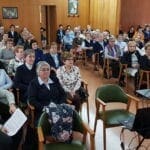




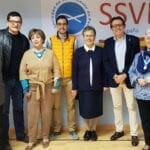

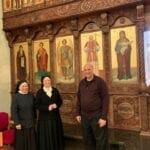
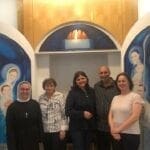
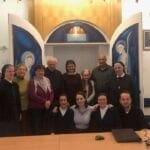






0 Comments